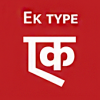
- Introduction
- Place
- People
- Process
- Products
Rajasthan has always been identified as a mosaic of unsurpassed beauty. Its golden sands, magnificent forts and palaces, teeming wildlife, colorful and friendly people have always mesmerized visitors from all over the globe. Though there are several cities in this state that patronize the arts and crafts, Jaipur leads them in all their glory, especially in the Kundan-Meena style of jewelry making. Kundan, meaning ‘pure gold’, is one of the oldest forms of jewelry making and stands for ethereal beauty, elegance and superb craftsmanship.

Jaipur or the Pink City, as it is known, is the capital and largest city of the Indian state of Rajasthan. It was founded by Maharaja Sawai Jai Singh II, the ruler of Amber, after whom the city has been named. Jaipur has a very interesting mix of culture and urban development.
The ancient architecture is beautifully conserved and gracefully blends with contemporary shops and cafeterias. The broad roads give way to narrow bylanes where karigars can be spotted working with crafts like bandhani, gotapatti, miniature paintings, blue pottery, silver and kundan jewelry making. ‘Gopalji ka raasta’ is one such lane in Johari Bazaar where most of the Kundan karigars live and work.

Conserved architecture of Jaipur city

Urban development in the city

Conserved architecture of Jaipur city

‘Gopalji ka raasta’, a lane in Johari Bazaar

Road signage

Streets of Jaipu

Bylanes of johari Bazaar

Bylanes of johari Bazaar

Bylanes of johari Bazaar

The entrance to one of the karigar’s workshop cum home

The entrance to one of the karigar’s workshop cum home

The entrance to one of the karigar’s workshop cum home

The entrance to one of the karigar’s workshop cum home

The entrance to one of the karigar’s workshop cum home

The entrance to one of the karigar’s workshop cum home

The entrance to one of the karigar’s workshop cum home

Kundan karigars at work
The art of making Kundan jewelry found great patronage during the Mughal era and some of the world’s most mesmerizing pieces of jewelry were created in those times. Manufacturing of Kundan-Meena jewelry is a long, skill-intensive job, requiring great effort and coordinated teamwork to create exquisite pieces. The karigars are masters of their craft and take great pride in their work. Their designs are simple yet aesthetic, consisting of simple geometric patterns to the more elaborate embellishments.

Karigar at work - ‘Jadayi’

Karigar at work - ‘Ghadayi’

Karigar at work - ‘Khudayi’

Karigar at work - ‘Jadayi’

Karigar at work - ‘Meenakari’

Karigar at work - ‘Ghadayi’

Karigar at work - ‘Jadayi’

Karigar at work - ‘Khudayi’

Karigars at work

Karigar at work - ‘Ghadayi’
Kundan-Meena is a unique technique of making jewelry by encrusting gold with precious and semi-precious stones (Kundan work) on one side and the art of colorful enamel work (Meenakari) on the reverse side. There are four steps to making any jewelry piece:
1. Ghadayi
‘Ghadayi’ is the process of making the skeleton or framework of the jewelry piece. Firstly, thin gold strips are prepared from a rolling machine. These are cut, coiled, shaped according to the design chosen by (or given to) the karigar using small tweezers and fine tools. These are placed or ‘set’ on a wax board to exactly replicate the design and then soldered together to form one solid piece such as an earring or a pendant. The black residue on the piece after the soldering process is cleaned using mild chemicals and then dried. Lac is heated and poured into the creeks, which are supposed to hold the gems.

Thin gold strips being prepared from a rolling machine

Thin gold strips being prepared from a rolling machine

Gold strip being shaped according to the design

Fine tools and tweezers to shape the gold strips

Gold strip being shaped according to the design

Gold strip being shaped according to the design

Gold strip being shaped according to the design

Gold strips being soldered together to form one solid piece

Gold strips being soldered together to form one solid piece

Gold strips being soldered together to form one solid piece

Gold strips being soldered together to form one solid piece

Gold strips being soldered together to form one solid piece

Soldered strips being set’ on a wax board to exactly replicate the design

Soldered strips being set’ on a wax board to exactly replicate the design

Soldered strips

The pendant framework, finally taking the shape of the intended design

The pendant framework, finally taking the shape of the intended design

The pendant framework, finally taking the shape of the intended design

The pendant framework, finally taking the shape of the intended design

Lac that will be poured into the creeks, which are supposed to hold the gems

Lac being heated and poured into the creeks, which are supposed to hold the gems

Lac being heated and poured into the creeks, which are supposed to hold the gems

Lac being heated and poured into the creeks, which are supposed to hold the gems
2. Jadayi
‘Jadayi’ is the process of gem setting by inserting a gold foil between the stones and their mount. Diamond, sapphire, emerald and ruby are the stones commonly used. To provide depth and refraction, a piece of silver foil is placed under the stones, making them gleam. These are heated and placed on the lac, after which, pieces of 24 carat gold foil (made soft and malleable by hammering) are set into the sides of the gemstones till they grip on tightly.
Fine tools are used to chisel the foil at an angle and bring out the fine details of the precious stones, enhancing their beauty. Finally, the ornament is adorned with hanging gems and strung in a wearable thread.

The framework (without the lac)

The jewelry piece (with lac), ready for stone-setting

The jewelry piece (with lac), ready for stone-setting

Dumbbells used for holding the jewelry piece in lac

Dumbbells used for holding the jewelry piece in lac

Jadayi begins with thin, fine tools

A piece of silver foil being placed under the stones, making them gleam

A piece of silver foil placed under the stones, making them gleam

Stones being heated and placed on lac

Stones being heated and placed on lac

Stones being heated and placed on lac

Stones being heated and placed on lac

24 carat gold foil being made soft and malleable by hammering

24 carat gold foil being made soft and malleable by hammering


24 carat gold foil made soft and malleable by hammering

Pieces of the 24 carat gold foil

Pieces of the 24 carat gold foil being inserted between the stones and their mount

Pieces of the 24 carat gold foil being inserted between the stones and their mount

Pieces of the 24 carat gold foil being inserted between the stones and their mount

Pieces of the 24 carat gold foil being inserted between the stones and their mount

Pieces of the 24 carat gold foil being inserted between the stones and their mount

Pieces of the 24 carat gold foil being inserted between the stones and their mount

Pieces of the 24 carat gold foil being inserted between the stones and their mount

Pieces of the 24 carat gold foil being inserted between the stones and their mount

Pieces of the 24 carat gold foil being inserted between the stones and their mount

Pieces of the 24 carat gold foil being inserted between the stones and their mount

The foil being chiseled at an angle to bring out the fine details of the precious stones

Difference between an unglazed and glazed cup

Front and back of a Kundan-Meena earring

Parts of a Maharani-haar (royal necklace) that will be strung in a wearable thread
3. Khudayi
‘Khudayi’ is the process of engraving or etching the pattern on the front or back (or both) of the jewelry piece. Though most of the motifs are floral or inspired by nature, some are geometric as well. Exquisite engraving requires a steady hand, high precision and immense concentration. The gold dust produced during this process is recycled.

Engraving tools

Floral pattern being engraved on the pendant

Floral pattern being engraved on the pendant

Floral pattern being engraved on the pendant

Floral pattern being engraved on the pendant

Details of the floral pattern engraved on the pendant

Details of the floral pattern engraved on the bangle

Details of the floral pattern engraved on the bangle

Details of the floral pattern engraved on the bangle

Gold dust that will be recycled
4. Meenakari
‘Meenakari’ is the technique of decorating the jewelry with enamel. It is an intricate and laborious process. Mostly red, green, blue and white are used. Combination of these with the color of gold is called ‘Panchranga’. These colors are applied with thin needles or spokes in the engraved pattern.
The jewelry piece has to be fired as many times as the number of colors used. Firing could be done in an electric kiln or on the coils of the domestic heater using a thin iron mesh. This fuses the color to the gold. Once all the colors are filled in and fired, the piece is scrubbed with a filer to enhance the gold outline of the pattern. Then this is boiled with a mild acid for sheen and sent to the next karigar for stone-setting.

Enamel colors

Enamel colors

Enamel colors being mixed with water for use

Enamel colors (Desi Meena)

Enamel colors (Desi Meena)

The jewelry piece on which colors have to be applied

Color being applied with thin spoke in the engraved pattern

Design being stenciled with stains on a planter

Design being stenciled with stains on a planter

The piece being fired on the coils of the domestic heater

An electric furnace

The piece kept on an iron mesh after the first firing

Color being applied with thin spoke in the engraved pattern

Color being applied with thin spoke in the engraved pattern

Color being applied with thin spoke in the engraved pattern

Color being applied with thin spoke in the engraved pattern

After the firing for second color (green)

The reverse side of the piece with a transparent chemical that strengthens the jewelry

The jewelry piece being scrubbed with a filer to enhance the gold outline of the pattern

The jewelry piece being scrubbed with a filer to enhance the gold outline of the pattern

The finished jewelry piece, to be boiled with a mild acid

Some finished, some unfinished jewelry pieces, to be sent for stone-setting

Jewelry pieces that need to be scrubbed before being sent for stone-setting

Jewelry pieces that need to be scrubbed before being sent for stone-setting

The piece being boiled with mild acid for sheen

The piece being boiled with mild acid for sheen

Jewelry piece with complete Meenakari, to be sent for stone-setting

Jewelry piece with complete Meenakari, to be sent for stone-setting

Jewelry piece with complete Meenakari, to be sent for stone-setting

Jewelry piece with complete Meenakari, to be sent for stone-setting

Details of Meenakari of the finished jewelry piece, to be sent for stone-setting

Details of Meenakari of the finished jewelry piece, to be sent for stone-setting
Kundan-Meena jewelry of India has a growing demand the world over. The most desired products include pendants, earrings, rings, necklaces, nose rings, chokers, anklets, waist belts, armlets, maang-tikas and other decorative items.

Pendant and earring set

Front of the pendant (Kundan work)

Back of the pendant (Meenakari)

Details of a pendant with Kundan work and Meenakari

Details of a pendant with Kundan work and Meenakari

Details of a pendant with Kundan work and Meenakari

Details of a pendant with Kundan work and Meenakari

Pendant and earring set


Pendant and earring set

Pendant and earring set

Details of a pendant with Kundan work

A stunning Kundan-Meena pendant with emeralds and ruby

Back of the pendant

Details of the Kundan-Meena pendant with emeralds and ruby

Back of a pendant with Hallmark stamp

A spoon to be used as a decorative item (unfinished).
This documentation was done by Sakshi Gambhir, M. Des., IDC, IIT Bombay.
You can get in touch with her at sakshigambhir[at]gmail.com
For Further details you can contact to:
• Ghadayi Karigar:
Raj Vansh Tongaria
Phone: 9468585295
• Khudayi Karigar:
Rajendra Kumar Verma
Phone: 9829074405
• Meenakari Karigars:
- Prem Shankar Soni
Phone: 9829373412 &
- Deen Dayal Jaswant Meenakar
Phone: 9509076210
• Jadayi Karigars:
- Rahul
Phone: 9509651005 &
- Ashwani Soni
Phone: 9829222198
You could write to the following address regarding suggestions and clarifications:
Helpdesk Details:
Co-ordinator
Project e-kalpa
Industrial Design Centre
IIT Bombay
Powai
Mumbai 4000 076
India
Phone: 091-22-25767820/ 7801/ 7802
Fax: 091-22-25767803
Email: contact[at]dsource.in
Participants:
Documentation and Content by: Sakshi Gambhir at IDC, IIT BombayPhotography: Sakshi Gambhir at IDC, IIT Bombay
Website Design: Professor Ravi Poovaiah
Website Layout: Pratibha Solanki
Web Content Editing: Sulochana Sable
Website Programming: Roopa N. Sahoo, Yogesh Masaye, Sunita Rajput, Mandar Joshi and Vaibhav Shah



